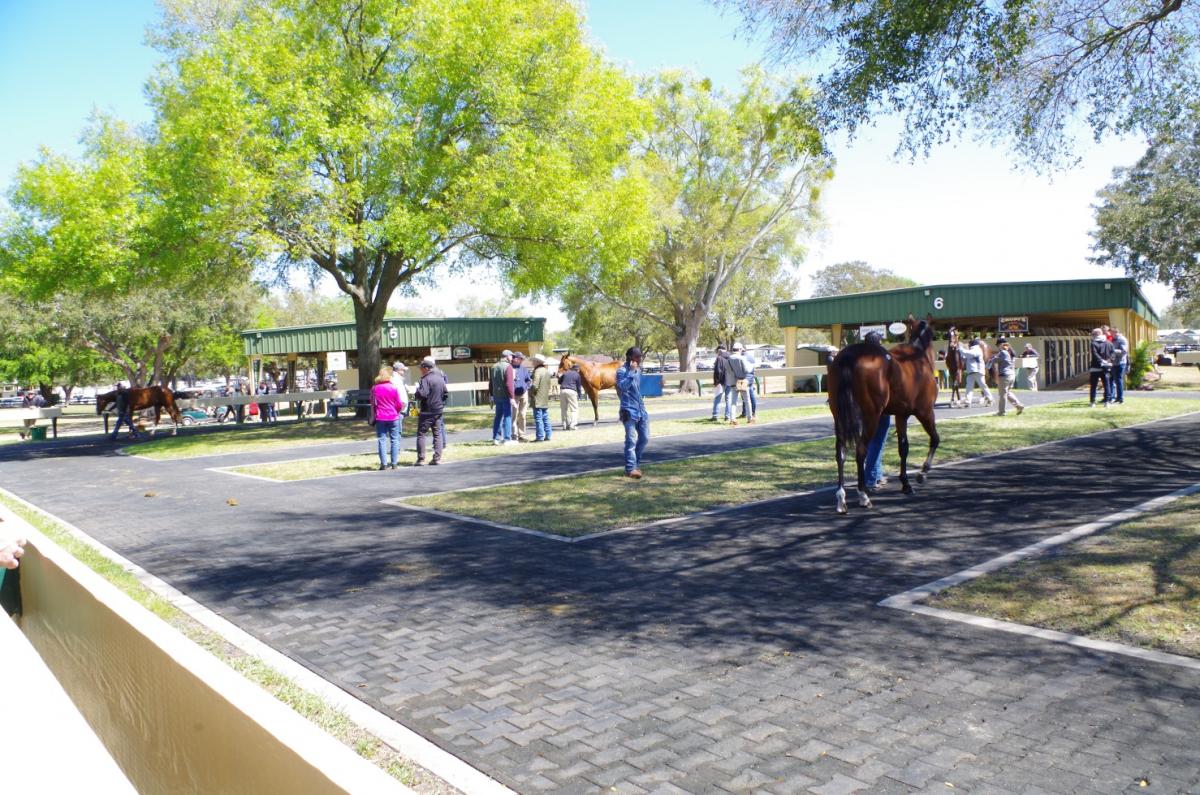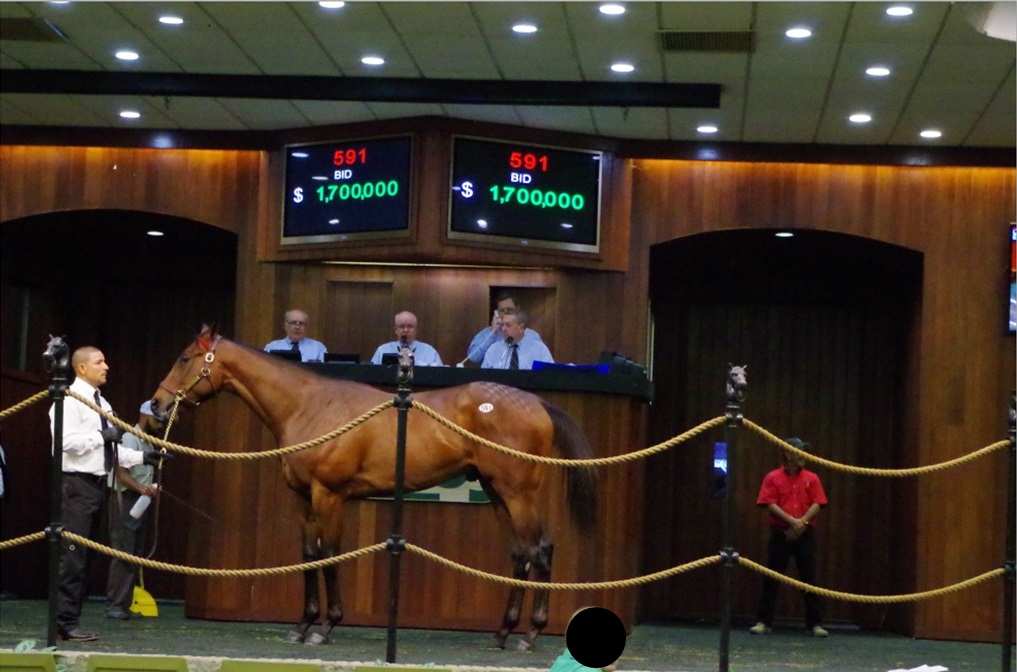Each year, at every major thoroughbred auction venue, people pay outrageous prices for unraced, unproven yearlings and two-year olds perceived to be the ‘best’ racing prospects in terms of pedigree, conformation and (in the case of two year olds), workout times. If only it were that simple! As we’ve detailed in previous columns like this one, Performance of highest priced sales horses leaves something to be desired, paying top dollar results in a top racehorse a shockingly small percentage of the time. An article in the May 2019 Mid-Atlantic Thoroughbred Magazine, Catalog Surfing: Two-year-olds of 2019 bring power to Timonium, noted the two highest priced horses from last year’s sale were the $1,200,000 sales topper, now named Lebron J, who remains unraced, and a $925,000 purchased named Tale Of The Union, who broke his maiden impressively at first asking at Del Mar last August, earning $36,000, and has not run since. Results like these for the highest-priced sales horses are the rule, not the exception. Looking at the same venue from 2017 for example, the record-setting $1,500,000 sales topper named Curlin’s Honor is stakes placed in Canada with career earnings of $168,353, while the $850,000 2nd highest priced horse named Inscom has one win in 12 starts with career earnings of $111,166. The results are very much the same for other leading auctions in Kentucky, Florida, New York and California. Bottom line, if it was as simple as buying the horses with the best pedigrees, conformation and workout times, a handful of billionaires would own all the best horses. Fortunately for the rest of us, it doesn’t work that way.
So what is the right amount of money to pay for a horse you really like? Let’s say your team attends a two-year-old auction, watches the pre-sale under tack show, reviews workout videos, personally inspects all the horses who moved well under tack, spends thousands of dollars on pre-sale vet exams, and comes up with a ‘short list’ of 3 or 4 “must haves” who tick all the boxes. How far do you go when the time comes to raise your hand in the bidding ring? That’s a question each buyer confronts at every sale and a large part of the answer lies in your budget and your goals. If your budget is unlimited and you are doing this for purely sporting results with no concern about financial returns perhaps it doesn’t matter if you overpay for what you really want. Then again, the above-mentioned results for sales toppers indicate you still are likely better off paying $100,000 each for ten nice prospects than $1,000,000 for the ‘best’ horse in the sale if your goal is a really good horse on the racetrack.
But what about if you DO care about the financial results, at least to some extent? We all understand racing is a high-risk game; 90% of all horses lose money and about 1/3 never even make it to the winner’s circle at any level so there are a lot easier and less risky ways to spend money if you’re strictly looking for a positive financial outcome. That said, having the discipline to limit your purchases to a price range where IF the horse IS successful on the track you will make money is more than perhaps any other factor the difference between a racing stable run as a business, and pure entertainment with no real chance of any financial return.

Last year at the OBS April 2 year old sale, Kenwood’s top pick was a colt by Exchange Rate (a sire we love) out of a nice Include mare. A late April foal, he moved beautifully on the track and seemed to be just coming into himself. In short, he ticked all the boxes. Our trainer Jerry Hollendorfer shared our enthusiasm, as did another one of Jerry’s clients, West Point Thoroughbreds. We agreed to bid on the horse as partners, thinking we might be able to purchase him for $120,000 - $150,000. When he came into the ring, it became apparent several other prospective buyers shared our opinion of his potential and the bidding quickly went past Kenwood’s limit of $150,000. West Point and Jerry kept going, and eventually the horse was hammered down to them for $225,000. Terry Finley of West Point very generously offered us the chance to buy in at their purchase price. It was tempting indeed, but for us the numbers say that paying over $100,000 - $125,000 for almost any colt makes little economic sense. We liked this particular colt so much we were willing to stretch the budget quite a bit, but we just didn’t see how the economics worked at $225,000.
All of us were correct in our evaluation of the colt; eventually named Gunmetal Gray, he went on to break his maiden at Del Mar, place 2nd in the Grade I American Pharoah Stakes and win the grade III Sham stakes at Santa Anita in seven lifetime starts, earning $284,700 before coming up with a likely career-ending condylar fracture. No doubt the colt was a racing success but from a purely economic perspective, we saved a lot of money by passing on him at $225,000. Take 10% each for jockey and trainer out of the total earnings and you are left with about $230,000. Figure another $60,000 in training expenses for a year + and you are left with $170,000. Add in insurance and stakes nominations and you end with a profit of roughly $150,000, enough to have likely broken even at our $150,000 limit but a substantial loss at $225,000. And all of that assumes no markups of any kind on the horse; end users in a syndicate with the usual 100% - 200% markup would have likely seen no return at all of their total investment. Perhaps the horse will make it back to the races and add to his earnings (we sure hope so!), but assuming he doesn’t, despite winning a graded stake he’ll very likely end up as a significant financial loss for his owners.
None of this is meant as a knock on the buyers, they identified a really nice horse who ended up a graded stakes winner under thier care. Only a fraction of 1% of all horses ever win a graded stake, so this was without question a genuine success story. The problem, as detailed above, is the economics of the thoroughbred racing game just don’t support paying much over $100,000 for any colt (for a well-bred filly with potential residual broodmare value you might make a case for paying $150,000 - $200,000 in some cases). If you come up with one of the top 1% of racehorses in the country and still lose money obviously something isn’t working, at least on a business basis. Bottom line, the purse structure in American racing simply doesn’t justify the price being paid by many buyers at public auction.
One of Kenwood’s trainers and a long-time personal friend used to say whenever we were looking at paying top dollar (for us!) at public auction for a prospect we really liked “it’s a long way down the elevator”. What he meant was, the statistics show that the majority of even your top prospects given to excellent trainers end up to be claiming horses at some level (assuming they make it to the winner’s circle at all), so if you pay a lot of money going in you are bound to lose a lot of money on the back end with the vast majority of horses you purchase. If you buy a horse for $50,000 and it turns out to be a decent claiming horse, you have a shot to get most or all of your money out. If it turns out to be a major stakes horse like Gunmetal Gray you have not only have a sporting success, you’ve actually made serious money that will help pay for your less successful runners. Remember that the majority of stakes winners at almost every auction venue year after year do not come from the sales toppers, but rather are sold for $150,000 or less, many-most for well under $100,000. As stated above, how high you bid depends on your budget and your goals. If the financial results matter, how many times you put up your hand for the horse you love at the sale is the difference between a racing stable run as a business with a shot at a profit, and a money pit.

Formula One was the OBS March 2017 sales topper at $1.7million. As of May 2019, his lifetime earnings are $4,331.

Comments
It Doesn't pay to overpay
Very informative and educational. Thanks Robb. This helps open my eyes on how Kenwood purchases their horses and the costs and profits involved. Thanks.
Blog
thank you Bev!
Economics of Horse Racing
As a horse owner for over 25 years, I completely agree.
Blog
Thank you Jim, it's a strange business indeed :)
RObb
Horse buying sense
Your reasoning is solid as per your explanation.
Add new comment